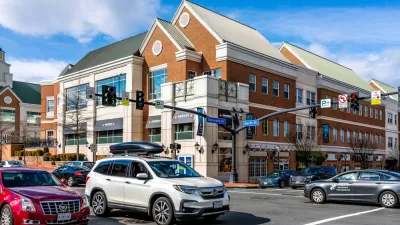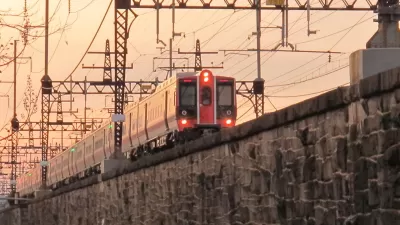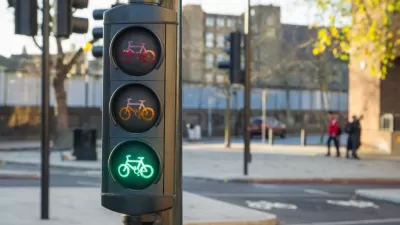"Level of service" is a ranking used by transportation engineers to assess the performance of roads. Streetsblog argues that LOS distorts the development of mobility infrastructure by prioritizing cars over people.
"There's a dirty little secret you should know about San Francisco: It's engineered first and foremost for automobility and will never be able to shed this bias if the traffic engineers are in the driver's seat wielding their traffic analysis tools like bibles. As long as the city continues prioritizing the use of transportation analysis known as Level of Service (LOS), you might as well burn our Transit First policy for warmth.
"On the one hand, LOS is a very simple and blunt metric for understanding the speed that vehicles can move about the city. LOS measures the amount of vehicular delay at an intersection, with A through F grades assigned to increased delay. This measurement is taken during the peak 15 minutes of evening rush hour and if an intersection slips from LOS D to LOS E, traffic managers will try to mitigate the impact, which usually means widening the road, shrinking the sidewalks, removing crosswalks, softening turning angles, and adjusting signal timing to speed the movement of vehicles.
"The result of relying on this poor methodology to shape the growth of cities has a profound affect on the politics of human mobility, privileging the movement of vehicles before the movement of anything else. Quite simply, LOS analysis has given us Phoenix and Atlanta, congestion and ever-longer commutes, and a whole host of ills that accompany reliance on the inefficient use of street space for our cars."
Thanks to George Osner, AICP
FULL STORY: Paradise LOSt (Part I): How Long Will the City Keep Us Stuck in Our Cars?

Alabama: Trump Terminates Settlements for Black Communities Harmed By Raw Sewage
Trump deemed the landmark civil rights agreement “illegal DEI and environmental justice policy.”

Planetizen Federal Action Tracker
A weekly monitor of how Trump’s orders and actions are impacting planners and planning in America.

The 120 Year Old Tiny Home Villages That Sheltered San Francisco’s Earthquake Refugees
More than a century ago, San Francisco mobilized to house thousands of residents displaced by the 1906 earthquake. Could their strategy offer a model for the present?

In Both Crashes and Crime, Public Transportation is Far Safer than Driving
Contrary to popular assumptions, public transportation has far lower crash and crime rates than automobile travel. For safer communities, improve and encourage transit travel.

Report: Zoning Reforms Should Complement Nashville’s Ambitious Transit Plan
Without reform, restrictive zoning codes will limit the impact of the city’s planned transit expansion and could exclude some of the residents who depend on transit the most.

Judge Orders Release of Frozen IRA, IIJA Funding
The decision is a victory for environmental groups who charged that freezing funds for critical infrastructure and disaster response programs caused “real and irreparable harm” to communities.
Urban Design for Planners 1: Software Tools
This six-course series explores essential urban design concepts using open source software and equips planners with the tools they need to participate fully in the urban design process.
Planning for Universal Design
Learn the tools for implementing Universal Design in planning regulations.
Clanton & Associates, Inc.
Jessamine County Fiscal Court
Institute for Housing and Urban Development Studies (IHS)
City of Grandview
Harvard GSD Executive Education
Toledo-Lucas County Plan Commissions
Salt Lake City
NYU Wagner Graduate School of Public Service





























